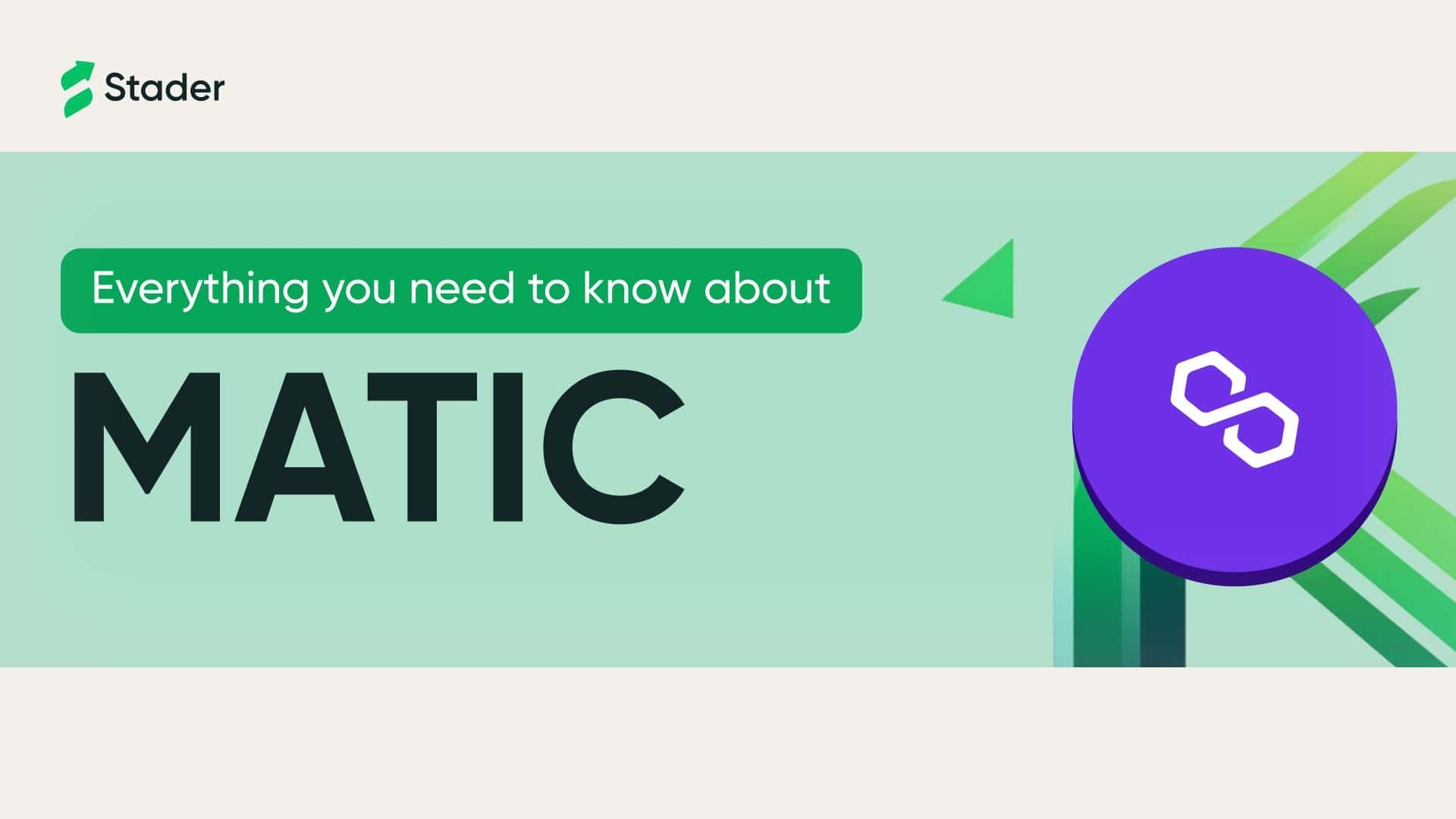What is Matic?
Home
Blogs
Staking Basics
What is Matic?

What is Matic?
Built by Jaynti Kanani, Sandeep Nailwal, and Anurag Arjun in 2017, Matic is the native cryptocurrency on Polygon. The Polygon (Matic) Network is a dApp developer friendly platform that enables quicker and less expensive transactions.
For quicker and less expensive transactions, the Plasma framework has been implemented by Matic Network. The Plasma Framework creates a secondary network which co-exists with the Ethereum mainnet. The advantage of this secondary network is that it speedily completes the transaction and returns back the outcome to the main-net. Which in turn, makes the transactions on the Ethereum mainnet more affordable and faster.
What is Polygon Network?
Polygon (formerly known as Matic Network) is a Layer 2 scaling solution built on top of Ethereum.It is primarily being used to provide a more efficient way to run dApps (Decentralized Applications) and process transactions. In the given article, We will explore more about Matic, how it works and what are its key features.
With Ethereum now being preferred for a variety of applications such as Digital Transactions, NFT’s, E-sports and many more, the number of transactions with Ethereum has risen to a number that sometimes the transaction fees (which is also known as “Gas fee”) for frequent or small transfers becomes too large for the transactions or investments made.
Now, to solve this problem Polygon or Matic Network has emerged to provide faster and cheaper transactions. Polygon acts as a platform on which you can ‘bridge’ your Cryptos and through which you can interact with other popular Crypto apps which was previously only possible through the main Ethereum Blockchain.
Also Read: What is Smart Contracts?
How does Polygon work?
Polygon is a crypto project involved in easing pain points on Ethereum Network and other Blockchain ecosystem. It also is simplifying the way Developers can work on Ethereum.
By working as a Layer 2 Protocol, Polygon aims to increase the transaction speed and also make it cost efficient for its users. Polygon primarily works Commit Chains, which are the transaction networks that works beside the main blockchain. Then the Commit Chains bundle together all the Transactions and verify them after which it returns the data to the main chain.
What are the Key Advantages of Matic ?
While there are a number of benefits to the users, including the faster and more affordable transactions, a better user experience for the dApp developers, a few key benefits of Matic Network includes:
- Improved Scalability: The Matic Network helped in reducing the burden of users on the mainnet making the network more scalable.
- Better User-Experience for the dApp developers: Matic offers a much better infrastructure layer for Ethereum which makes it easier and efficient to deploy the dApps which in turn gives a much better experience for the developers.
- Faster and cheaper transactions: On Polygon Network, the transactions are being processed on the sidechain instead of the main-net, it allows faster transaction and cheaper transaction fees, as the side chains are not as heavily congested as the main-net.
- Interoperability with other blockchains: Matic is easily operable with other blockchains, which means that users can have easy transfer of the assets between different blockchains.
Also Read: Proof of Work vs Proof of Stake
Risks and Drawbacks of Polygon
Few Drawbacks and Risks of Polygon to be considered are:
- Limited usage for MATIC token: The MATIC token is designed to govern and secure the Polygon network and pay the transaction fees. Apart from that, it cannot be used on a general basis.
- Dependency on Ethereum: Polygon is a Layer 2 protocol which works for the Ethereum platform. So, if the Ethereum have some serious problems on its platform it is very likely to have a huge impact on the Polygon Network.
Future of Polygon (MATIC)
According to an analysis conducted by Cryptocurrency experts, the minimum and maximum trading price for the Polygon would be $3.39 and $4.09 with average trading cost to be $3.51 by 2025. However, we should always consider the market conditions and risks on ourselves before making any Investments in the Crypto market.
Popular Searches
Polygon VS ETH | How To Add Matic To Metamask| Matic Staking Wallet | What is Web 3.0 | What is MEV | Lstfi Crypto | Proof of Work Vs Proof of Stake | Cross Chain Bridges | Liquid Staking Derivatives | Is Liquid Staking Safe | Matic Staking Rewards | Ethereum Staking Rewards | Altcoins | Tokenmics | BNB Chain vs EVM Chains | What is DeFi | What is Cryptocurrency | What is Web 3.0 | Yield Farming Vs Staking
By:
Shivendra Singh
Join Stader’s newsletter
Get the latest updates, new DeFi strategies and exclusive offers right in your email box
Analytics
© Copyright 2023 Stader. All rights reserved.











